Photographing a newborn captures fleeting little details. Everything is so tiny and cute for such a short period of time. This is exactly what has opened up business opportunities to photographers. Professional newborn photographer Elli Cassidy guides you through the preparation and skills for getting started with newborn photography:
As with most photography sessions, newborn photography requires a lot of preparation.
“I can’t stress enough how much preparing your session well—preparing the parents, the baby, and yourself—will make the world of difference to whether you have a good session, a great session, or a disastrous session.”
Preparing Parents for Newborn Photography
Preparing the parents is so vital that Cassidy shares a preparatory PDF with the parents when they book a session. And she goes through them again on the day of the shoot. Here are some important things that she asks the parents to do:
- Keep the baby awake on the morning of the session.
- Time a feed for when they arrive at the studio. This ensures that the tired baby will have a sound sleep during the photography session.
- Don’t use oils or lotions on the baby on the morning of the session. Oily skin can create hot spots and make the work difficult for the photographer. Dry and flaky skin, on the other hand, is easier to edit.
- Bring extra milk. Having an extra bottle of milk can comfort the baby. Also, as studios can get really warm, some extra milk can help to keep the babies hydrated.
- Bring blankets from home. You can use the spare blanket at the studio to settle a baby, but if the blanket smells of home, the baby will settle down faster. So, it is a great idea to ask the parents to bring one with them.
- Bring a pacifier. A pacifier helps the baby remain calm and go to sleep. Be sure to have one with you as a backup in case the parents forget.
“You can have the baby swaddled with a dummy and do the whole 3-2-1, pull out, take your photo, and give it back again.”
- Wear loose layers. The studio can get hot as the day goes on. If the parents are dressed up in layers, they can adjust accordingly.
- Discuss ahead of time if siblings will be involved in the shoot at any point. If the siblings are to be involved in the shoot, arrange to bring them in for the first or last half-hour of the session. The hot studio environment can be difficult for the child to bear. Besides, it will make your work easier as well.
- Allow up to four hours for the session. Allow yourself some cushion time so that neither you nor the parents feel stressed out if the baby has difficulty settling. It is always good to be done earlier than anticipated.
- Explain that most of the time will be spent settling the baby rather than photographing. Most of the session will be spent feeding, cuddling, soothing, and settling the baby. There will be a small window while the baby is asleep where most of the photographs will be taken.
Preparing Yourself and the Studio
Along with the parents, you as a photographer need to be prepared for the shoot day.
- Babies can find it uncomfortable to remain naked for a longer time. Use a heater even during summer to comfort the baby.
- Some babies are allergic to perfume. Avoid using fragrance on the day of the shoot.
- Since you will be handling a baby, it’s better if you don’t wear a watch, rings, and jewelry while working.
- Keep extra clothes for yourself on hand.
The Session
On the day of the session, here’s what Cassidy likes to do:
- Have the parents settled in the seating area and provide something to drink. Meanwhile, talk about the baby, the delivery, and whether the baby has any medical challenges. This helps you bond with the family and in the process, you get to know if there are any restrictions on posing the baby in certain ways for medical reasons.
- Ask the parents to undress the baby down to a nappy and wrap the baby in a blanket. Then, ask the parents to feed the baby. This way the baby won’t be disturbed if he or she goes to sleep after being fed.
- Get to know the birth weight so that you can select your props and blanket size accordingly.
- Make Mom or Dad feel relaxed by handling the baby with confidence.
- Use hand sanitizer before handling the baby.
- Play light music and background noise in the studio so as not to startle the baby when you talk and work.
- Make the baby feel used to you. You can do this by cuddling them, rocking them, and maybe even dancing with them.
- After the baby is asleep, notice when they enter deep sleep. It is the perfect window to photograph a sleeping baby. Once the child is asleep in your arms, wait for at least 2-3 minutes before you start working. This tiny bit of patience really pays off.
“When they enter deep sleep, the limbs will go still and heavy, and they breathe more from their chest and their stomach. It’s a much slower sleep.”
Besides learning how to photograph babies, it’s important that you learn to read babies. You’ll be a better newborn photographer if you can tell when a baby is gassy, hungry, comfortable, or in pain.
Like This Article?
Don't Miss The Next One!
Join over 100,000 photographers of all experience levels who receive our free photography tips and articles to stay current:
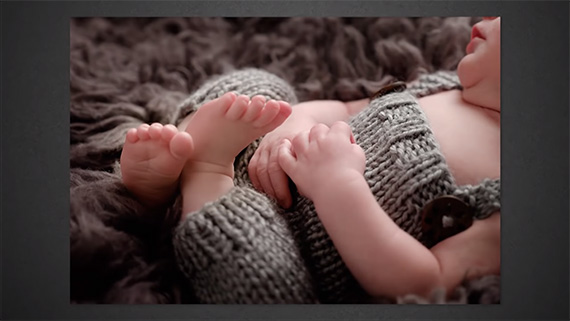
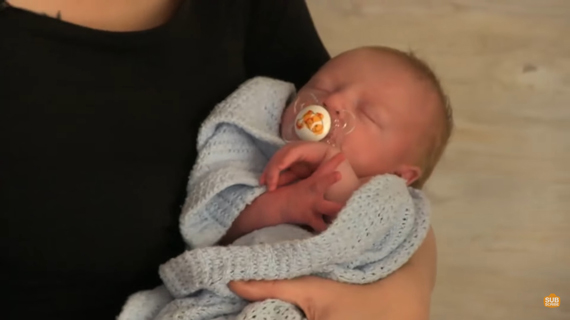
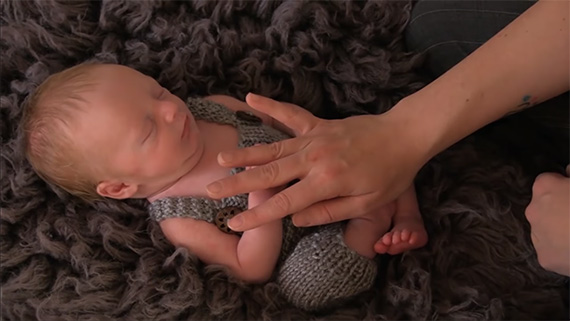
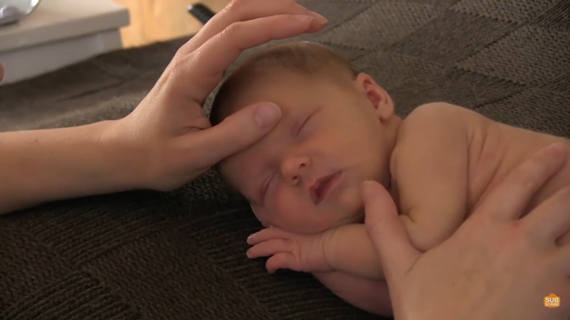

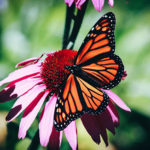




Newborn photography is the best way to remind the memory of childhood age. For whole newborn photography, session parents help to prepare.